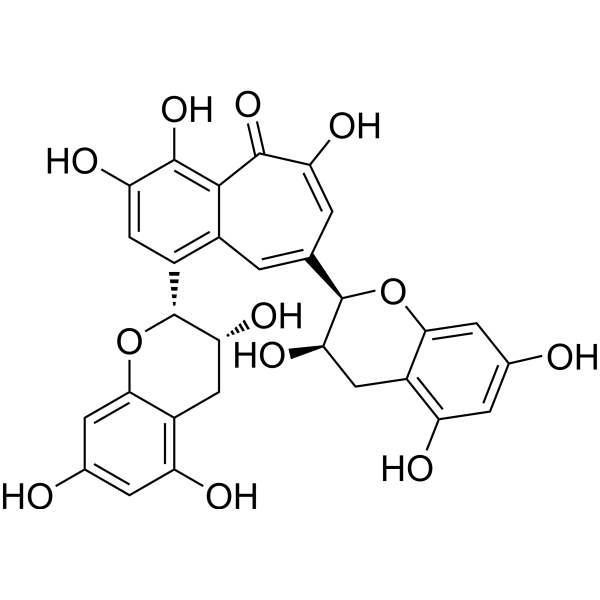Home
Products
Theaflavin



| Product Name | Theaflavin |
| Price: | Inquiry |
| Catalog No.: | CN05330 |
| CAS No.: | 4670-05-7 |
| Molecular Formula: | C29H24O12 |
| Molecular Weight: | 564.49 g/mol |
| Purity: | >=98% |
| Type of Compound: | Flavonoids |
| Physical Desc.: | Powder |
| Source: | The leaves of Camellia sinensis (L.) O. Kuntze. |
| Solvent: | DMSO, Pyridine, Methanol, Ethanol, etc. |
| SMILES: | Oc1cc2O[C@@H]([C@@H](Cc2c(c1)O)O)c1cc2c(cc(c(c2c(=O)c(c1)O)O)O)[C@H]1Oc2cc(O)cc(c2C[C@H]1O)O |
| Contact us | |
|---|---|
| First Name: | |
| Last Name: | |
| E-mail: | |
| Question: | |
| Description | Theaflavin is a suitable natural inhibitor against influenza A (H1N1) neuraminidase. |
| Target | Influenza A (H1N1) virus[1] |
| In Vitro | Theaflavin, found in green tea, is observed to inhibit H1N1 NA proteins strongly supported by lowest docking energy. Theaflavin is a plant product traditionally used for treatment of influenza infection. Green tea is particularly rich in polyphenolic compounds like Theaflavin. Theaflavin derivatives have shown pronounced antiviral activity. Theaflavin is found to interact with the amino acid residues like Arg118, Asp151, Asp 152, Arg193, Asp199, Asn344, and Arg430 of NA by forming hydrogen bonds[1]. |
| Density | 1.6±0.1 g/cm3 |
| Boiling Point | 926.2±65.0 °C at 760 mmHg |
| Flash Point | 314.3±27.8 °C |
| PSA | 156.91000 |
| LogP | 1.61 |
| Vapour Pressure | 0.0±0.3 mmHg at 25°C |